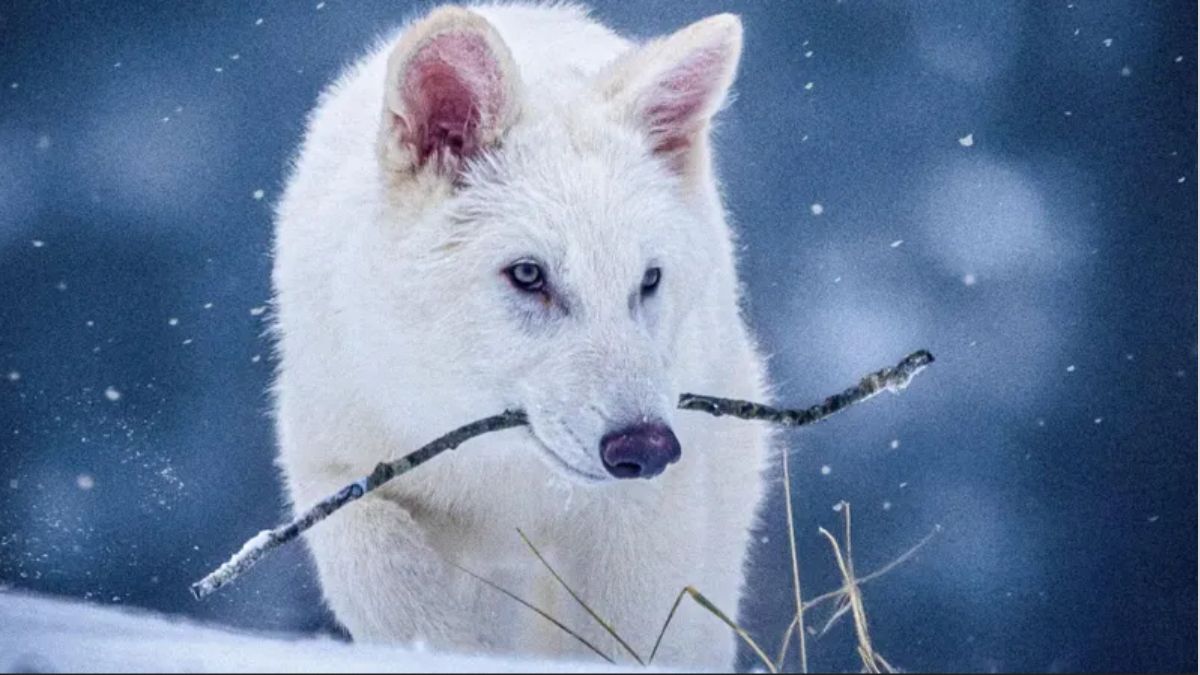A striking white wolf recently appeared on the cover of Time Magazine, stirring global excitement with the claim that the extinct dire wolf has been brought back to life. The biotech company behind this development, Colossal Biosciences, announced the birth of three genetically engineered wolf pups—Romulus, Remus, and Khaleesi. These animals, according to Colossal, represent a landmark in de-extinction technology.
However, a closer look reveals that the science may not fully support the claim that these are true dire wolves.

What Exactly Is a Dire Wolf?
The dire wolf (Aenocyon dirus) is not a mythical creature from Game of Thrones, though it gained pop culture fame through the series. It was a real, now-extinct predator that roamed North and South America during the Pleistocene epoch, vanishing around 10,000 years ago. Not to be confused with modern grey wolves, dire wolves were larger, heavier, and genetically distinct.
Colossal Biosciences’ Claim: Bringing Back the Past?
Colossal Biosciences has captured public imagination with bold plans to resurrect extinct animals. Apart from the dire wolf, the company has announced efforts to revive the woolly mammoth and the Tasmanian tiger using synthetic biology and gene editing.
Their recent announcement claimed they used ancient DNA and advanced genetic engineering to recreate dire wolves. But critics argue that while the feat is scientifically impressive, the result is not a true dire wolf.
Expert Analysis: Not a Dire Wolf, But a Modified Grey Wolf
Several independent scientists have weighed in on the matter. Dr. Philip Seddon, a zoologist from the University of Otago in New Zealand, explained that the animals are, in fact, genetically modified grey wolves. According to Dr. Nic Rawlence, a paleogeneticist also at Otago, the ancient DNA of the dire wolf is far too degraded to allow accurate cloning.
He likens ancient DNA to baking modern DNA at 500 degrees overnight—what remains is fragmented, brittle, and essentially unusable for full genomic reconstruction. Instead, Colossal used grey wolf DNA as a template, editing specific genes to mimic dire wolf traits like a larger skull and white fur.
How Was the Genetic Editing Done?
Dr. Beth Shapiro from Colossal Biosciences elaborated on the process. Since the grey wolf is the closest living relative to the dire wolf, scientists targeted specific gene sequences that influence physical traits. These genes were edited to reflect what is known about dire wolves, and the modified cells were then cloned.
The embryos were implanted into domestic dog surrogates and delivered via caesarean section to minimize risk.
Dire Wolf vs Genetically Modified Wolf: Key Differences
| Aspect | True Dire Wolf | Colossal’s Wolves |
|---|---|---|
| Scientific Genus | Aenocyon dirus | Canis lupus (grey wolf) |
| DNA Source | Ancient, degraded | Modern, grey wolf DNA |
| Method Used | N/A (extinct) | Gene editing + cloning |
| Physical Traits | Large skull, muscular build | Some similar traits (e.g., larger skull) |
| Genomic Similarity | Distant (diverged ~6M years ago) | Limited – about 20 gene changes |
| Habitat | Ice Age Americas | Captive, private U.S. facility |
The Ethical and Scientific Debate
This genetic experiment raises important ethical and ecological questions. While the animals may resemble dire wolves in some ways, scientists like Dr. Rawlence argue that extinction is still permanent. Bringing back a hybrid is not the same as reversing extinction.
Moreover, critics question the implications: Could this technology encourage complacency about conservation? If species can be “recreated,” what incentive is there to protect endangered ones now?
Dr. Rawlence warns, “If we treat extinction as reversible, we risk undermining decades of conservation efforts.”
Colossal’s Vision: What Comes Next?
Despite criticism, Colossal Biosciences continues to push forward with its de-extinction initiatives. The company, which secured a $10 billion valuation earlier this year, is housing the genetically modified wolves in a private 2,000-acre facility somewhere in the northern United States. They claim the experiment is the first step toward large-scale conservation through synthetic biology.
While the wolves might not be true dire wolves, the technology demonstrates how far genetic manipulation has come—and hints at what may soon be possible.
Click here to know more.
Kishan is a knowledgeable writer specializing in agriculture and the latest government job recruitments, delivering clear and insightful content to inform and empower readers.
